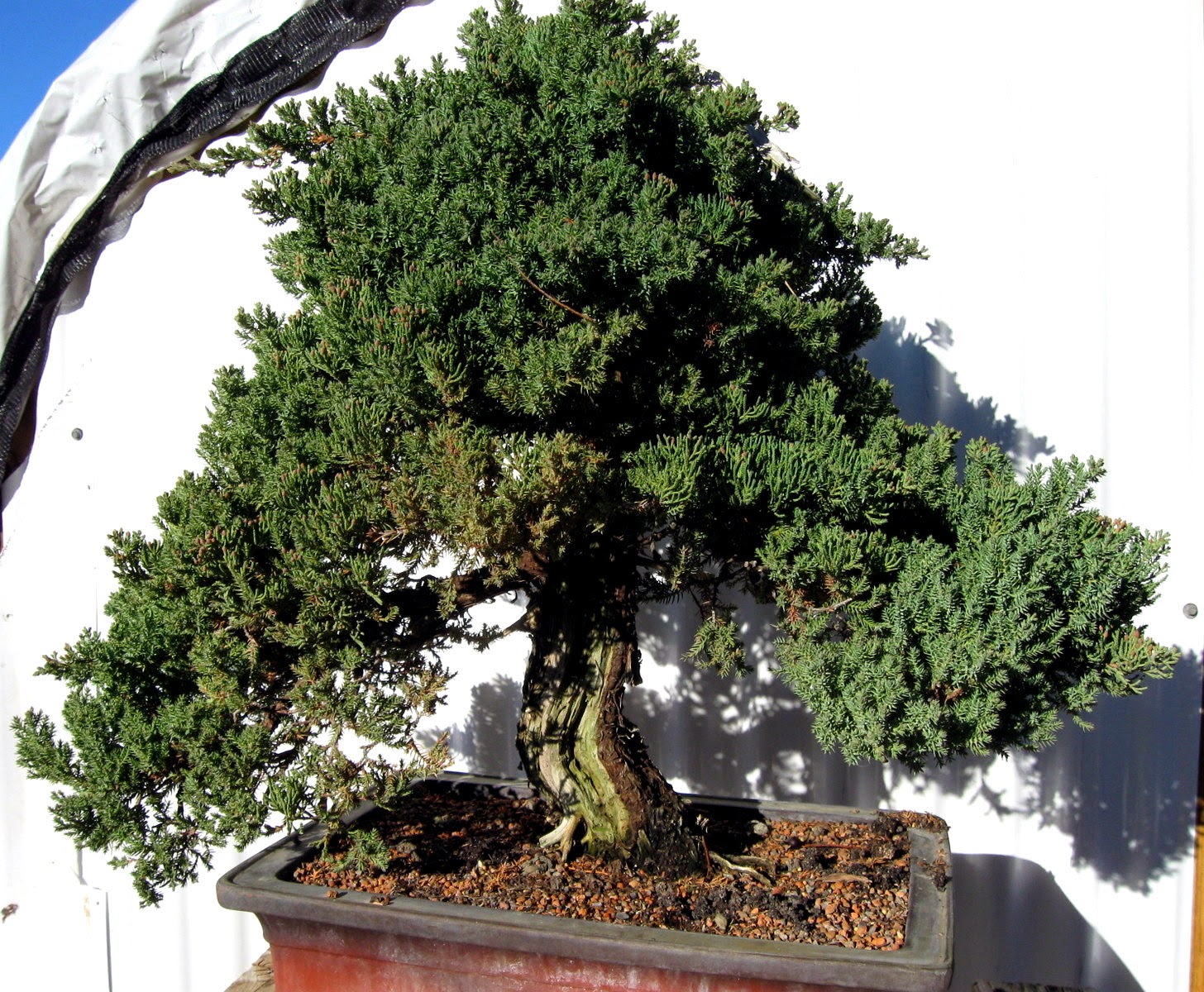Next up, setting the structure on a yamadori Limber Pine. The main trunk appears to have died a number of years ago before collecting. Two branches then fought for supremacy until the one closer to the trunk (on the left) died after collecting. This branch would have made an ideal leader since it was short and growing close to the old trunk line.
We had a few issues with this new leader - it was growing too straight and the branching was too far from the trunk. Since the most interesting features of the tree exist along the lower trunk line, this branch had to be compacted to bring the foliage closer to the lower trunk line.
We had a few issues with this new leader - it was growing too straight and the branching was too far from the trunk. Since the most interesting features of the tree exist along the lower trunk line, this branch had to be compacted to bring the foliage closer to the lower trunk line.
A substantial portion of the branch was dead and required removal in order for the branch to become more pliable. We used a large trunk splitter for this work. Todd has his work face on...
A layer of raffia placed on the underside of the branch, against the live vein. This layer was then secured with raffia circling around the branch.
Large gauge copper wire is applied along the branch and secured with raffia.
The prep work is complete and it's time to get our bend on! A guy wire was used to secure the new position as we slowly began to maneuver the branch and is tightened as the branch is bent. Wood pieces are cut on the fly for bracing the branch while bending.
The final result...
The tree was placed in shade and under a misting system following the procedure to aid in recovery.
























































